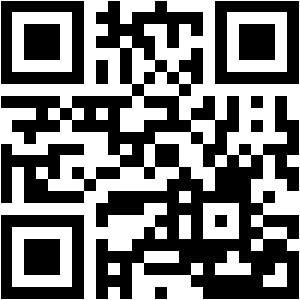| University | Universal College of Learning (UCOL) |
| Subject | NURS4411 Nursing as a Profession |
NZ DIPLOMA IN ENROLLED NURSING: PART ONE
Learning outcome assessed:
Identify and discuss relevant legislation, ethical principles standards and codes pertaining to health care delivery and health consumer, family/whanau care.
Assessment Purpose:
For the student to demonstrate an understanding of health care legislation, ethical principles, profession nursing codes & standards, that are relevant to health care delivery and the health consumer.
Assessment key words:
Health care legislation Code of Ethics 2019
Ethical principles Health Consumer
Health and Disability Commissioner Act (1994)
Code of Health and disability Consumers’ Rights
Residential care setting
Assessment Task/Activities:
Over the past weeks you have been introduced to knowledge about Nursing as a Profession, the legal and ethical influences on the Enrolled nurse’s practice.
You are required to present a written assignment based on the scenario provided which relates to a situation in a residential care setting/facility.
- Present a written assignment
- Read the scenario below and review the Code of Health and Disability Consumers’ Rights (www.hdc.org.nz) & NZNO Code of Ethic, 2019 (www.nzno.org.nz) to identify and support your responses.
- Identify two rights from the Health & Disability Services Consumers Code of Rights, that have been met by the Enrolled Nurse (EN) in the scenario.
- Briefly discuss how these two rights have been met and provide an example from the scenario.
- Identify two ethical principles from NZNO Code of Ethic (2019), that have been met by the EN, in the scenario.
- Clearly discuss how these two ethical principles, would guide the EN in her ethical decision making, when providing cares.
NB: This assignment is to be submitted to Turnitin for marking
Stuck! Do not Know Assessment Answers?
Hire NZ Native Experts 24/7.
Scenario
Ms G works as an Enrolled Nurse in a residential care setting/facility.
Ms G is working on the morning shift and has been caring for Ellen Smith, who has been diagnosed with early stages of dementia and has some memory loss. Ellen has been assessed as a high fallsn risk, due to poor balance and having a previous fall. Ellen mobilises with a walking frame.
Ms G enters Ellen’s room, introducing herself and greeting Ellen. Ms G gains verbal consent from Ellen to assist her to the dining room for her morning meal. Ms G asks Ellen to choose which table she would like to sit at in the dining room. Ms G encourages Ellen to eat her meal as she often forgets to eat and assists her only as required. After breakfast Ms G returns Ellen to her room and asks Ellen when she would like a shower. Ellen stated that she usually has her shower after breakfast. Ms G asks if Ellen is happy for her to assist her with her personal hygiene cares and Ellen states she is. Ms G closes the bathroom door, communicating with Ellen whilst providing encouragement and assistance throughout the cares. Ms G’s mobile phone rings, but she does not leave the bathroom or answer the phone and apologises to Ellen for the interruption. Ellen said she had mislaid her glasses in the dining room, so Ms G says she will find them later. On return to the bedroom Ms G ensures Ellen is safely seated and then goes to look for Ellen’s glasses. Ms G documented all the cares provided and returned the nursing notes into the nursing station.
Structure:
Introduction:
- Include an introduction (100 words) that introduces the reader to the purpose and outline the key aspects covered in the essay
Body:
- You need to plan your discussion so that each of the assessment activities are covered
- Refer to the marking schedule/rubric and you will see that you need to write more under some of the points as they are worth more marks.
- Plan your essay to ensure a clear flow of ideas that are well linked from one part of the discussion to the next and related to the scenario.
- The discussion should demonstrate that you understand the topic of health care legislation and ethical principles and its relevance to health care delivery.
Conclusion:
- Include a conclusion which briefly summarises the main points of your discussion (100 words approx.)
Format
- Assignment presentation guidelines as per Manukau Institute of Technology (MIT), School of Nursing, Student Information Handbook or formatting guidelines page on Canvas
Word Count:
Within the required word limit i.e. +/- 10 % of 1000 words excluding the referencing
Referencing
- You will need to relate and support your discussion with reference to literature by citing a minimum of two references within your essay.
- In-text citations and the reference list must be completed using APA 7th edition (refer to MIT Library Guide on Canvas).
STUDENT DECLARATION
- The use of GenAI in this assessment is not permitted. Any suspected use of these tools may result in investigation for Academic Misconduct in accordance with the MIT/Te Pukenga Ākonga Policy.
- Assessment material will be required for moderation purposes and when completed will be kept by your kaiako.
- Assessments are to be submitted through Turnitin. Ākonga are recommended to review their similarity score prior to final submission.
- Assessments are to be submitted through Turnitin. Ākonga are recommended to check their submission against one of the following AI detector tools, prior to final submission.
( https://aiwritingcheck.org/LinksLinks to an external site. to an external site. or https://gptzero.me/LinksLinks to an external site. to an external site. ).
By submitting my work via Canvas, I agree to the following student declaration:
I certify that the attached work is my original work and that I have not allowed, and in the future will not allow, other students, to copy it. It is my understanding that it is my responsibility to check with my lecturer that I have satisfactorily completed this assessment.
Buy Custom Assignment & Homework Solutions
Pay to NZ Native Writers | Cheap Cost & Plag Free
Marking Rubric
| Criteria | Not Completed | Unsatisfactory | Developing/ Beginner | Competent/ Adequate | Good/Proficient/ Accomplished |
|---|---|---|---|---|---|
| Introduction: Briefly introduces the topic. | Introduction not included. (0) | Considerably more or less than 100 words or 10% of word count (approx.). The purpose of the essay is not clearly addressed and/or confused outline of the key concepts (0-1) | Considerably more or less than 100 words or 10% of word count (approx.) question. The purpose of the essay is briefly addressed. Limited or confused outline of the key concepts (1-3) | Approximately 100 words (10% of word count) The purpose of the essay is addressed. Most of the key concepts are outlined. (3-4) | Approximately 100 words (10% of word count) The purpose of the essay is clearly and concisely addressed. All key concepts are correctly outlined and accurately relate to the purpose. (4-5) |
| Identify rights: identifies two Rights that have been met in the Scenario. | No rights are identified (0) | One or more rights are identified but are not covered under the Act and/or and are not relevant to the scenario. (0-1) | One right under the Act is briefly identified but relevant to the scenario (1-3) | Two rights under the Act that are mostly relevant are identified to the scenario. (3-4) | Two rights under the Act that are clearly relevant and concisely identified to the scenario. (4-6) |
| Discuss the rights: Discusses two Rights that have been met, providing examples from the Scenario. | No rights are discussed (0) | One or two rights under the Act discussed and an example provided but not relevant to scenario (0-1) | One right under the Act is briefly discussed and an example provided, that is relevant to scenario (1-3) | Two rights are adequately discussed and an example provided relevant to scenario (3-6) | Two rights under the Act are both comprehensively discussed and an example provided relevant to the scenario (6-9) |
| Identify ethical principles: Correctly identifies two ethical principles. | No ethical principles are identified (0) | One or more ethical principles are identified, but are not relevant to the scenario. (0-1) | One ethical principle is briefly identified and relevant to the scenario. (1-2) | Two ethical principles are identified and mostly relevant to the scenario. (2-3) | Two ethical principles are correctly identified and clearly relevant to the scenario. (3-4) |
| Clearly discusses how these ethical principles would have guided the nurse | No ethical principles are discussed (0) | Discussion about ethical principles is not relevant to the scenario and/or does not describe how they would have guided the nurse. (0-2) | One accurately identified principle is discussed and how it would have guided the nurse is mostly correctly described. (2-5) | Two accurately identified principles are discussed and how they would have guided the nurse is mostly correctly described. (5-7) | Two accurately identified principles are discussed and how they would have guided the nurse is correctly described. (7-10) |
| Conclusion: Briefly summarises the main points | Conclusion not included. (0) | Considerably more or less than 50 words. Main points are not summarised clearly. New material is added in the Conclusion. (0-1) | Considerably more or less than 50 words. Summarises some of the main points. Some logical conclusion that relates to the scenario. (1-3) | Approximately 50-100 words. Summarises most of the main points. Some logical conclusion that relates to the scenario. (3-4) | Approximately 100 words. Accurately summarises all the main points. A concise, logical conclusion that relates clearly to the scenario. (4-5) |
| Written format: Correct format for written work (Student Handbook) | No formatting used (0) | Significant formatting errors that do not meet the requirements of the Student Handbook (0-1) | Inconsistent formatting but generally meets the requirements of the Student Handbook (1-3) | Most formatting meets the requirements of the Student Handbook (3-4) | All formatting correctly meets the requirements of the Student Handbook (4-5) |
| Length: Within the required word limit (1000 words) | Significantly above or below the 1000-word limit (0) | Outside the word limit by slightly more or less than 10% of 1000word limit (0-1) | Outside 1000-word limit by not more than 10 % above or below the words limit (1-2) | ||
| APA referencing: Includes references APA 7th (minimum of 2 references) | No Reference List No referencing in the text. (0) | Reference list included but no references in text (0-1) | Reference list included. One reference in text (APA 7thed.) with minimal errors. (2-1) | Two references provided in text and on Reference list, with correct APA 7th formatting. (2-4) |
In quest for a professional assignment help?
Flexible rates compatible with everyone’s budget
Need help with your NURS4411 Nursing as a Profession Assignment? NZ Assignment Help provides professional Nursing Assignment Help, guiding students to understand and apply ethical principles, health care legislation, and professional nursing codes in residential care settings. Our experts help you craft well-structured, fully referenced assignments that accurately address scenarios, demonstrate critical thinking, and align with NZNO Code of Ethics 2019 and the Health & Disability Commissioner Act (1994).
- NURS602 Long-term Care and Disability Assessment 1 – Auckland University of Technology
- NURS802/2502 Reasoning in Practice – Aromatawai Tuatoru Assessment 3
- Clinical Risk Reduction Written Assignment Brief – Auckland University of Technology
- PUT102 Te Aka Pūtaiao (Kaupae 5) Assessment Three Individual Report
- LSCPG8.300 Strategic Procurement, Partnerships and Outsourcing – Assessment 1 Report
- DSP302 A2 Microsoft Access Assessment – Creating, Troubleshooting, Ethical Data Management and Developing Additional Skills
- BUSS510 Professional Skills Trimester 3, 2025 Assignment 1
- ECON802 Economics and Global Trade Assignment 1 – Auckland Institute Of Studies
- BSRV4601 Fundamentals of Real Estate Assessment 2 Variation B(1)
- Postgraduate Diploma in Health Sciences Assignment – Pain, Pain Assessment and Pain Management for Health Professionals


